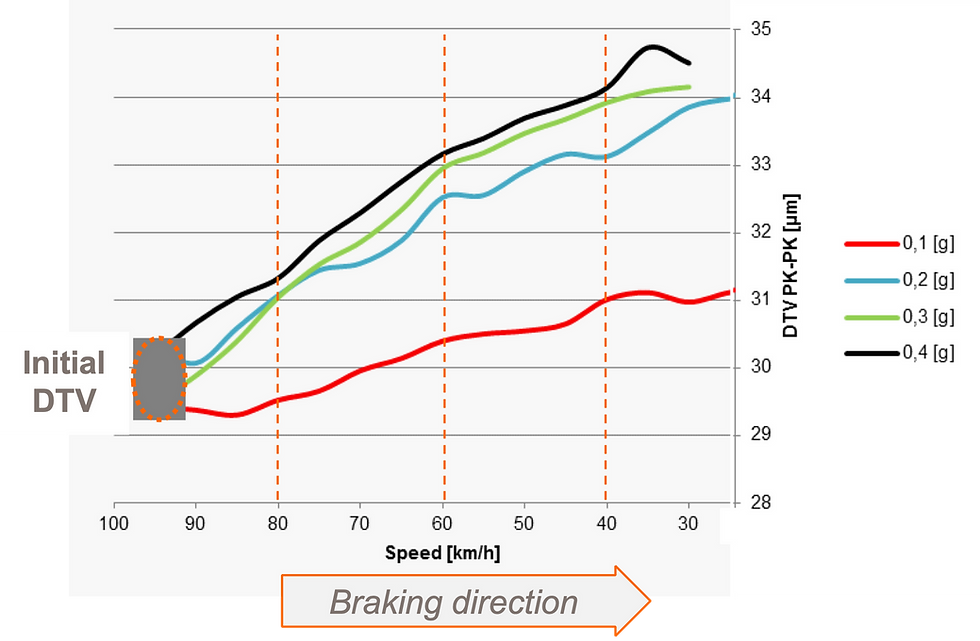Operational DTV Measurements under Brake Judder Conditions - Part 2 of 2
- Dr. Juan Jesús García
- Apr 3, 2022
- 3 min read
Article by: Juan Jesús García, PhD, Product Manager, Braking Systems in Applus IDIADA
In the first part of the article, the study aimed at measuring in-service DTV at constant vehicle speed and during braking applications was presented.
The experimental arrangement for dynamic DTV measurements includes three lightweight mono-axial accelerometers to record the vibration movements experienced by each displacement sensor during in-service conditions:

The bracket housing the displacement transducers, on the other hand, is designed so that its first resonance involving torsion of the clamps is around 400 Hz (which is well above the maximum frequency expected from road excitation). Note that the proposed design is to be held in the knuckle.

An example of the output is shown in the figure below, which compares:
A quasi-static DTV measurement (DTV ref).
An in-service DTV measurement at a vehicle speed of 150 km/h, with (DTV1) and without (DTV2) acceleration correction.

Observe that the use of acceleration correction in the measurement of the operational DTV offers a noticeable improvement in the accuracy, reducing the error to about a half.
Next step is measuring in-service DTV throughout a brake snub. The following chart shows the peak-to-peak value of the DTV time history for various brake applications with different deceleration rates (0.1 – 0.4g). During the measured brake applications, the brake temperature changed from 85°C to 165 °C.

Accurate in-service DTV measurements are valuable because they can be related with subjective and objective response to judder excitation. In this case, the objective assessment of judder response is aimed at correlating the vibration levels perceived by the driver with the subjective perception. From the vehicle structure point of view, it is also possible to correlate DTV levels with the bending and torsion exhibited by the vehicle body under judder excitation. This information is important if one wants to assess the relative contribution of body stiffness to overall judder response. The method to evaluate dynamic bending and/or torsion of a vehicle body is based on the measurement of the acceleration data from a total of 6 tri-axial accelerometers located in the suspension domes of the vehicle and the centre of the body sill. The accelerometer locations define a dihedral, whose operational deformation allows the global bending and torsion of the vehicle body to be calculated under any operational load and in particular, for judder excitation.

The vibration displacements of all the points contained in the nominal dihedral can be calculated by double integration; then, the application of geometric relationships yields the corresponding time histories for torsion and bending of the vehicle body. The example below shows the measured time history of the body torsion of a vehicle under brake judder load:

Thus, a correlation can be established between DTV, judder-induced vibration and vehicle body deformation. This information is of paramount importance for understanding and optimizing vehicle body stiffness and correlating simulation models of chassis dynamics.
The results presented in this article prove that the in-service measurement of DTV can be optimized to have similar error levels as those obtained in quasi-static conditions if suitable bracket design is combined with the correction of the displacement sensors vibration. Also, DTV values can be correlated with overall vehicle body deformation expressed in terms of the body bending and torsion during braking application.
Comments